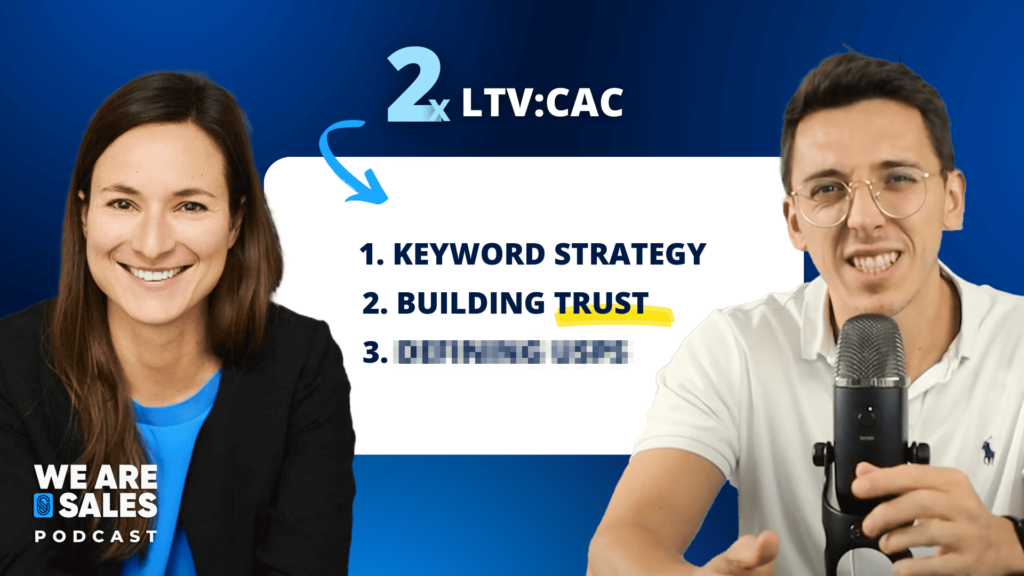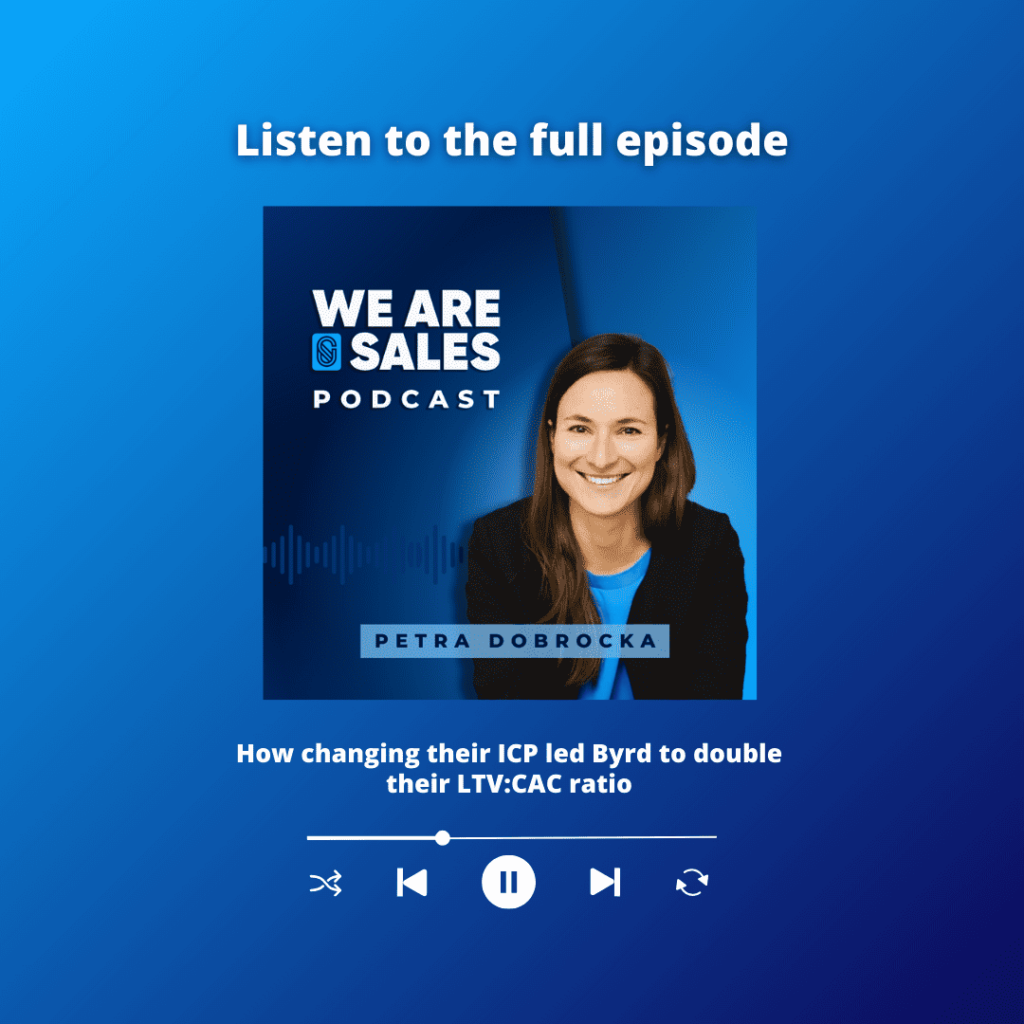Share:
This is how Byrd 2x’d their LTV:CAC ratio

So let’s talk LTV:CAC ratio. Our friends at Byrd were able to 2x their LTV:CAC ratio. Now, I am sure you are familiar with the ratio, but in case you aren’t:
- LTV – Customer Lifetime Value, is the estimation of how much an avg customer will bring in revenue throughout their lifespan as a customer
- CAC – Customer Acquisition Cost, is the amount of money a business spend to get a new customer
Good businesses tend to have LTV:CAC > 3. This essentially means that a customer, in average, generates 3x more revenue than it costs them to get that customer. This is a sign of sustainable growth, customer retention and allows the organisation to further invest in R&D – all that good stuff.
However, the team at Byrd used to not experience this:
“Our LTV:CAC ratio was around 1 to 2. So if you think about it, you invest money to then just generate that money back. This is not what is expected from a successful business.” – Petra Dobrocko, founding CCO at Byrd.
Fast-forward today, Byrd has more than doubled their LTV:CAC ratio. How? By simply moving upmarket. In what comes you will be able to read our favourite takeaways from our interview with Petra, the founding CCO at Byrd.
For context: Byrd is the fast-growing ecommerce fulfillment partner for (online) retailers in Europe and the UK. Their mission is to provide smaller online retailers with the same fulfillment capacities as the ecommerce giants.
Want more articles like this one directly in your mailbox?
Now, selling to a higher segment of the market is not simply doing the same set of activities and expect that these customers will come to you.
So, let’s dive into the changes that Byrd put in place to address that higher segment.
A New Messaging
After multiple iterations, their messaging underwent 3 types of changes: (1) new vocabulary, (2) bringing proof that they know their craft and (3) the USPs put forward.
Let’s start with the first one:
We had to change our keyword strategy. To give you an example, smaller retailers look for the term “e-commerce logistics”, but more established retailers would google the term “fulfillment partner”. The more advanced the customer, the more industry-specific their language gets.
This might seem like a small change, but this change had to be done on all their marketing assets and sales collaterals.
Secondly, they had to proof they could serve a higher segment. The fact that they had no references with more established retailers was a huge challenge for them.
That was a huge challenge. These big retailers wouldn’t switch from their current provider without having actual proof that we know what we do. So we centralised a lot of our messaging around “building trust”.
For example, we have created 360° views of our warehouses to show engaged prospects of what we are working with. We have created case studies for different verticals. We hired PR agencies that would make sure Byrd gets mentioned in various media outlets. We mentioned our funding round, certifications of our partners…
Basically anything they could think of to boost their credibility as a fulfillment partner.
Lastly, what used to set them apart as a unique selling point is no longer relevant, given that the more established retailers now have more complex requirements.
This one took us some iterations before we really got it, but we had to understand what’s important to our new ICP. These USPs were different than previously. For example, smaller retailers didn’t care that we have an international network. However, the bigger ones absolutely do.
Marketing & sales collaboration was key to have a shared understanding of these new USPs.
One effective strategy we implemented was involving our marketing team in sales demos and calls. This allowed them to witness prospects’ initial reactions, concerns, and frequent pain points. We then used these insights to re-iterate on our marketing materials.
Talking about USPs…
Because these bigger retailers have more complex demands, Byrd could not identify a fixed set of USPs that would resonate equally with all prospects.
That brings us to the following change.
From a standardized sales process to consultative selling
When it comes to the sales team, they had to become industry-experts. This wasn’t necessary at first, but now:
These more established retailers oftentimes have already a very customised set-up, with a shop system in place; they want their packages packed in a certain way; they are spread out geographically.
So they had to train the team:
As of today we are still training the team to make them true experts. From a selling perspective, this also means we had to transition into consultative selling
In this manner, the sales team acts as “consultants”, demonstrating to growth-focused retailers how they could achieve mutual growth with Byrd.
But how about prospects that are not falling into this new definition of the ideal customer? This leads us to the final key point.
Nurture non-ICP
Even months after having gone upmarket, Byrd is still getting requests from smaller retailers.
You can never fully remove inbound leads that are not part of your new ICP.
So I asked Petra how she handles this lead:
We came up with the idea of identifying which leads are not a fit today, but might become one in 6 to 12 months. For these leads, we developed a nurturing campaign. This way, whenever they are big enough, we are top-of-mind.
Want more? Listen to the full interview here 👉 🎙 How changing their ICP led Byrd to double their LTV:CAC ratio

